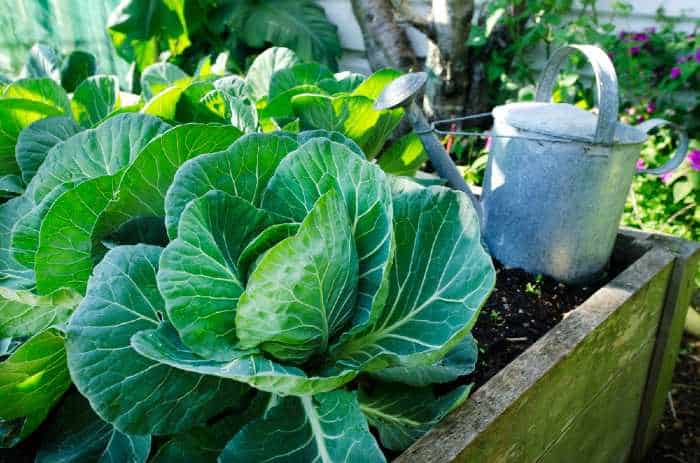Easiest Vegetables To Grow In Minnesota
Through this guide, we'll look at the easiest vegetables to grow in Minnesota and show you how to garden in a way that works with the state's unique agricultural setting.
Easiest Vegetables To Grow In Minnesota

The varied weather and rich dirt in Minnesota make it a great place to grow a lot of veggies. There are lots of great places in the state to grow a wide range of veggies, no matter how experienced or new to gardening you are. From the bright colors of summer to the cool, frosty days of fall, Minnesota’s growing season gives farmers a lot of chances to grow a wide range of fruits and vegetables. Through this guide, we’ll look at the easiest vegetables to grow in Minnesota and show you how to garden in a way that works with the state’s unique agricultural setting.
Easiest Vegetables To Grow In Minnesota
Tomatoes
Gardeners love the tomato plant because it tastes great and is easy to grow. People who live in Minnesota are especially likely to hold this view. Planting this versatile red vegetable (often mistaken for a fruit) will produce healthy food, whether inside or outside. Many people think it’s harder to distinguish between fruit and vegetables because they are popular, which goes beyond plant categories. Easiest Vegetables To Grow In Minnesota, where the tomato, still thriving in the garden, serves as a promising sign of both good food and good gardening. Fans can quickly get it because it is hardy and flexible, making it an even more popular choice for plants across the state. Gardeners learn how to grow a good crop and enjoy the fruits and vegetables they worked so hard to grow by taking on the trip to take care of this plant.
Kale
Kale is the most important part of Maple Plain, Minnesota’s green environment because it is the most important green vegetable staple. Minnesota’s weather is perfect for kale, making it one of the best veggies for hardy growing because it can handle the tough conditions of the state’s cool weather. The fact that this tough and nutrient-dense plant does well in improved soil and gets even better when old compost is added shows how well it can adapt to how people grow together. Easiest Vegetables To Grow In Minnesota, where cultivating a thriving kale crop is made simple by the careful maintenance of soil moisture through regular watering. The plant’s resilience and vibrant green leaves create a beautiful addition to the yard, standing out against the dark Minnesota sky.. Located in the heart of Maple Plain, it appears as a cornerstone of health, exemplifying the marriage of flavor, sustainability, and agricultural success.
Cucumbers
It’s no secret that cucumbers are one of the best and easiest vegetables to grow in Minnesota gardens that are doing well. People in the area really like this common garden veggie because it can be used in many different ways in salads and adds a nice fresh touch to the food there. Cones are warm-weather plants that do really well in Minnesota’s soil. Plant cucumbers in May, and they’re ready to pick in July. Getting loose, sandy loam soil is one of the most important parts of good gardening. This type of soil is perfect for growing cucumbers. Cucumbers do not need nitrogen to grow, but they do better in dirt with a lot of potassium and phosphate. All of this shows how important it is to eat well to have a good output. Easiest vegetables to grow in Minnesota, the intertwining vines and emerging cucumbers not only become a garden delight but also serve as a tasty addition to the local food scene. This simple cultivation stands as a great example of Minnesota’s diverse and growing farming sector.
Beets
Minnesota grows more sugar beets than any other state in the US. This is because the lands there are very rich in nutrients. Thanks to this achievement, Minnesota can do well in the fertile part of the Red River Valley. Beets are a crop that does best in cool weather. They were first grown in Minnesota, and you can plant them as early as April. Planting the seeds about half an inch deep in rich, nutrient-rich soil is the most essential thing that can be done to make sure the plants grow well. These bright root veggies grow well in the six hours of sunlight daily. During the summer, they turn into tasty treats that are ready to be picked. Beets show how well they can adapt to the changing weather in the Red River Valley. Easiest vegetables to grow in Minnesota, where the cultivation of beets contributes to the rich and varied agricultural success of the region, particularly in the flourishing Red River Valley.
Squash
Growing summer and winter squash in Minnesota is simple and satisfying. These hardy plants do well in sandy soil with a pH of 6, representing ease in gardening. For the best results, plant squash during the warm season, especially between May and June, which is when the weather is best in your state. Giving the vines plenty of room to spread out is essential because squash plants do best when they have room to grow and spread. Minnesota farmers love squash because it is easy to care for and produces much fruit. Easiest Vegetables To Grow In Minnesota, where cultivating squash in your yard tells a story of how easy, flexible, and fun it is to grow a wide range of this healthy and helpful vegetable.
Brussels Sprouts
Fall and spring have cooler temperatures that are perfect for growing Brussels sprouts. This makes them great for Minnesota’s wide range of veggie farming. It takes at least 26 weeks for this veggie to mature fully, and the weather in the state is perfect for growing it. This is in contrast to what most plants like Brussels sprouts like when they get less sunlight. This is because Brussels sprouts might not be ready to eat as quickly if they are in direct sunlight for too long. It’s important to water plants enough, and during the growing season, a good rule of thumb is to water plants about an inch per week. Increasing their growth potential by strategically growing with aromatic herbs like oregano, rosemary, mint, and sage improves their growing environment. When the Brussels sprout plant gets to about two and a half feet tall, it clearly shows that it is time to pick. This ends a long and enjoyable trip to Minnesota’s many beautiful and productive vegetable fields.
Cabbage
White cabbage is a popular choice in Minnesota’s veggie gardens because it can be used in many different ways. The best way to grow cabbage is to start with seeds that are planted indoors. This can take up to three weeks before the plants are moved outside. The time it takes for this tough veggie to reach full maturity varies across 60 to 180 days. The weather in Minnesota makes summer the best time to plant cabbages, which is in line with traditional growing practices. Planting seeds at a depth of only half an inch is the key to a successful cabbage crop. This shows how careful cultivation and the tough nature of this versatile veggie can work together in harmony. In the rhythm of Minnesota’s farming seasons, white cabbage tells a story of patience, flexibility, and the healthy pleasure of growing a garden full of this hardy and healthy brassica.
Cauliflower
Regarding cruciferous veggies, cauliflower is one of the best choices for Minnesota gardens. It grows best in soil that is high in nutrients and has a pH level between six and seven. Making loose, moist soil that is about twelve inches deep is needed to grow this useful plant. Three inches of mulch around the cabbage protects it and helps it keep its moisture. These vegetables snowball, so they must be watered regularly and in large amounts daily. The blanching time lasts for about 50 to 100 days. When the cauliflower head gets to be about six inches across, you can tell it’s ready to be picked. This is the result of months of careful care and cultivation. Cauliflower is the perfect example of how hard work, careful attention, and the joy of harvesting a thriving cruciferous delight can work together in Minnesota’s veggie gardens.
Carrots
Because the dirt in a Minnesota garden is so rich, the bright orange carrots need to be planted from seeds outside instead of the more difficult transplanting method. The best times to plant these root veggies are in April, May, and June. Carrots, which prefer a depth of one inch, find their different places approximately two to three inches apart in the rich soil, which boasts a nutrient profile that is filled with potassium and phosphate. To become fully grown, these tough vegetables go on a journey that lasts between 70 and 80 days. Every day, they are out in the sun for six hours. When carrots are ready, their bright green roots sprout to a width of about an inch. This is the end of a long process of patiently growing and caring for them. The way they grow carrots in a Minnesota yard is exactly how it should be done.
Lettuce
Though Minnesota is made up of many different types of green fields, lettuce stands out as a leafy green that is easy to grow and does especially well during the summer. When you plant this versatile vegetable outside in the warm spring weather, it grows roots in a beautiful way. A surface that has been lovingly touched by compost is perfect for growing cabbage. For growing lettuce, the best conditions are ones with loose dirt that drains well. While some plants in its family need a lot of sunshine, lettuce doesn’t have as strict of requirements when it comes to sunlight. It only needs four hours of sunshine a day for its growth to be bright. The ease with which such healthy greens can be grown in Minnesota’s gardens is shown by lettuce. It adds beauty to the yard and makes food taste better to the state’s agricultural history. Because the leaves grow so big, lettuce is a sign of how good the weather is in the area.
Radish
In Minnesota, where it gets cold, recently picked organic radishes look beautiful in the yard because they do so well in cool weather. Adding a spicy and round touch to the garden, radishes deserve to be on the list of best veggies to grow in the state. From April to May is the best time to plant these bright gems, which goes well with the feeling of renewal that comes with spring.
Expert gardeners say that the best soil for planting is one that is loose and crumbly, about six inches deep. This will set the stage for a good harvest in five weeks. Because they are sensitive to natural stress, radishes do best when they are protected from heat, drought, and other harsh conditions. In a Minnesota garden, the bright colors and sour tastes of freshly picked radishes represent both a tasty treat and the hardiness and adaptability of these cool-weather plants in the northern farming landscape.
Spinach
When it comes to growing in Minnesota, spinach stands out as a hardy and flexible cool-season crop that does well in both spring and fall. This leafy green does best in wet, nitrogen-rich soil, which shows that it likes places with lots of nutrients. Sowing seeds outside is the best way to grow spinach because plants grown indoors are fragile and hard to move.
As little as four hours of sunlight a day is enough for spinach to grow, and its bright leaves open up in a beautiful way. Spinach grows quickly and is at its best in four to six weeks, giving a gardener a timely prize for their hard work. When the upper leaves grow to a length of six inches, they show that it’s time to harvest, turning it into a work of visual art. In the green spaces of Minnesota, spinach is both useful and delicious. It dresses up gardens with its quick growth and nutritional wealth as the seasons change.
Onions
To grow onions successfully in Minnesota, you should plant them in early spring, when the ground is soft and doesn’t stay soggy. These versatile veggies do best in soil that is high in nitrogen, and they need enough room for their roots to spread out. Give each onion six inches of space. Easiest Vegetables To Grow In Minnesota, where the challenge of growing onions from seeds in the north is acknowledged due to the extended growth cycle of 100 to 175 days, posing a weather-related hurdle for cultivation.
Onion plants are smart about how much water they use and are very hardy. They only need about an inch of water twice a week. The hardworking gardener is looking forward to the end of this long, patient trip as the onion bulbs slowly grow under the ground. In Minnesota’s agricultural tapestry, onions are not only an important food item, but also a symbol of the hard work and careful planning that are needed for a good harvest in the state’s changing seasons.
Blueberry Bushes
In the challenging landscape of Minnesota, the cultivation of blueberry bushes may be a feat but not an impossibility, especially in the northern half of the state where pine trees dominate. These plants that bear berries need acidic soil with a pH level between 4 and 5. This shows how important it is to handle the soil strategically for growth. A depth of about 20 inches is best for planting a blueberry bush so that it has plenty of room away from weeds, trees, and other plants that could compete with it.
The sun is very good for blueberries; they need at least six hours of sunlight every day to grow well. The process of planting starts in the spring, and the harvest, which lasts from June to August, is the prize. In the northern part of Minnesota, blueberry bushes defy the chances and represent the success of careful cultivation and the joy of raising these delicate fruits in the state’s varied and difficult farming terrain.
Conclusion
As this look at the easiest vegetables to grow in Minnesota comes to a close, it’s clear that the state’s varied temperature and fertile soil are perfect for a wide range of crops. Each crop, from the easy-to-grow tomatoes to the tough kale to the hearty beets and Brussels sprouts, represents a different kind of delicious food and the strength and flexibility needed to garden in the North Star State. Whether it’s the simple radish or the difficult but satisfying blueberry bushes, Minnesota’s gardens show hard work, patience, and the joy of growing a healthy crop in a region where the seasons change all the time.
Latest Blog Articles
Connect with Wassup Minnesota
Table of contents
MN News Letter!
Sign up to our newsletter for the best Minnesota content sent directly to your inbox! 😎


